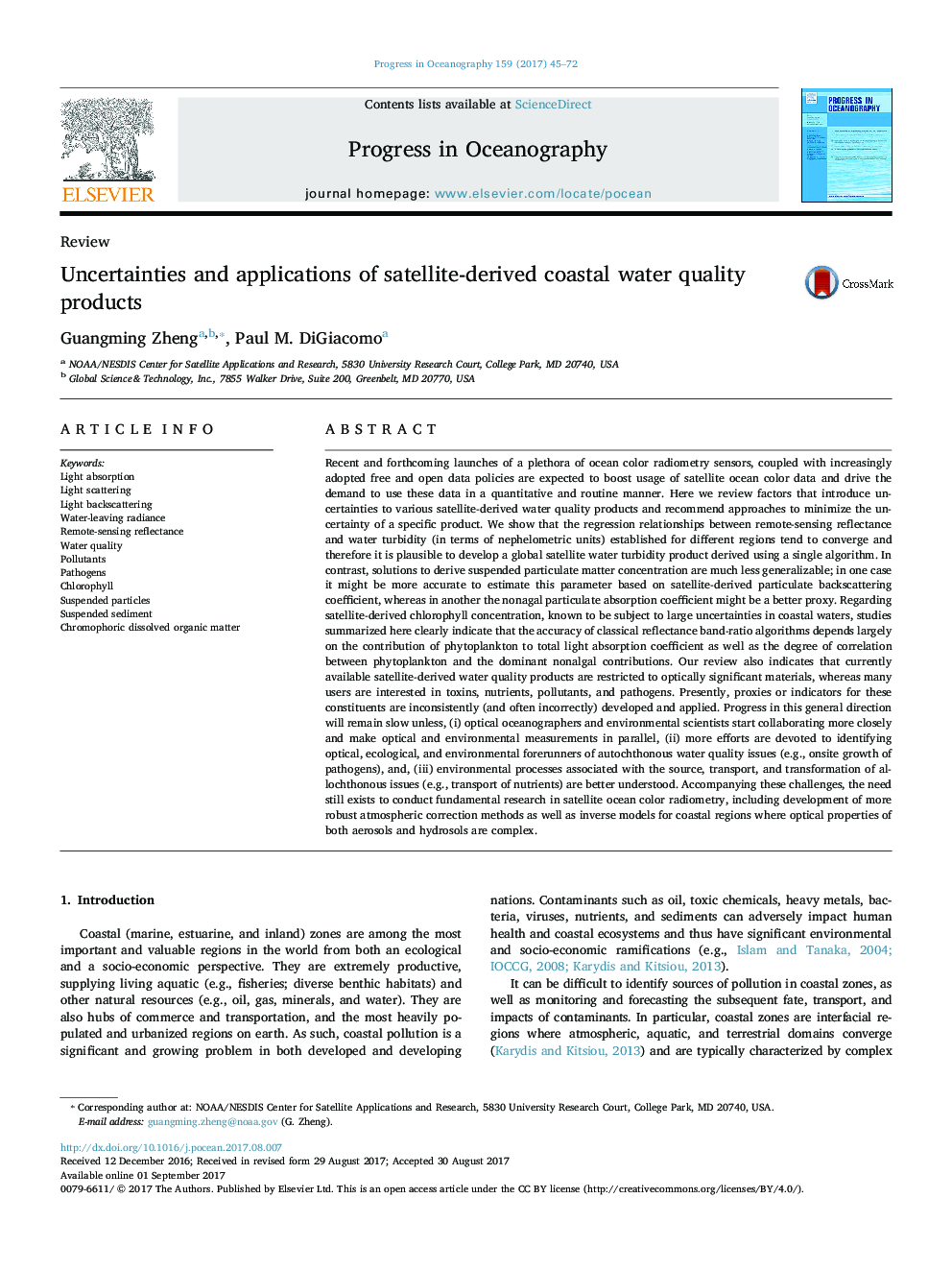| کد مقاله | کد نشریه | سال انتشار | مقاله انگلیسی | نسخه تمام متن |
|---|---|---|---|---|
| 5766463 | 1627899 | 2017 | 28 صفحه PDF | دانلود رایگان |
- Uncertainties of satellite-derived water quality products are reviewed tier by tier.
- Insights on applications of different satellite products are discussed.
- Future directions towards advancing satellite water quality research are proposed.
Recent and forthcoming launches of a plethora of ocean color radiometry sensors, coupled with increasingly adopted free and open data policies are expected to boost usage of satellite ocean color data and drive the demand to use these data in a quantitative and routine manner. Here we review factors that introduce uncertainties to various satellite-derived water quality products and recommend approaches to minimize the uncertainty of a specific product. We show that the regression relationships between remote-sensing reflectance and water turbidity (in terms of nephelometric units) established for different regions tend to converge and therefore it is plausible to develop a global satellite water turbidity product derived using a single algorithm. In contrast, solutions to derive suspended particulate matter concentration are much less generalizable; in one case it might be more accurate to estimate this parameter based on satellite-derived particulate backscattering coefficient, whereas in another the nonagal particulate absorption coefficient might be a better proxy. Regarding satellite-derived chlorophyll concentration, known to be subject to large uncertainties in coastal waters, studies summarized here clearly indicate that the accuracy of classical reflectance band-ratio algorithms depends largely on the contribution of phytoplankton to total light absorption coefficient as well as the degree of correlation between phytoplankton and the dominant nonalgal contributions. Our review also indicates that currently available satellite-derived water quality products are restricted to optically significant materials, whereas many users are interested in toxins, nutrients, pollutants, and pathogens. Presently, proxies or indicators for these constituents are inconsistently (and often incorrectly) developed and applied. Progress in this general direction will remain slow unless, (i) optical oceanographers and environmental scientists start collaborating more closely and make optical and environmental measurements in parallel, (ii) more efforts are devoted to identifying optical, ecological, and environmental forerunners of autochthonous water quality issues (e.g., onsite growth of pathogens), and, (iii) environmental processes associated with the source, transport, and transformation of allochthonous issues (e.g., transport of nutrients) are better understood. Accompanying these challenges, the need still exists to conduct fundamental research in satellite ocean color radiometry, including development of more robust atmospheric correction methods as well as inverse models for coastal regions where optical properties of both aerosols and hydrosols are complex.
Journal: Progress in Oceanography - Volume 159, December 2017, Pages 45-72
